 |
|


All electronic donations will be
processed by PayPal


Nantucket/LV-112
Proudly made in USA
Attention
lighthouse lovers!
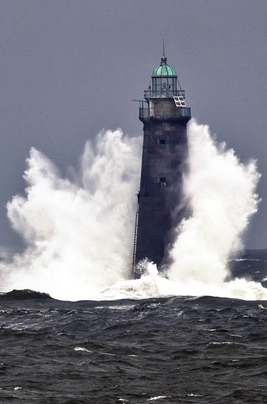
If you love lighthouses and want to learn about these guiding lights and navigational aids all over the world, then
The Lighthouse Directory is the website for you. It provides an astounding amount of information, linking to more than 17,200 of the world's lighthouses. Russ Rowlett, Adjunct Professor of Mathematics at the University of North Carolina at Chapel Hill, compiled the directory with the assistance of hundreds of lighthouse fans around the world who have enriched this site with their own information and suggestions. For a long time, Rowlett tried to maintain a list of lighthouses from his many friends and contacts, but it had grown too long (and too out of date) to display on the comprehensive site. Rowlett offers special thanks to
Michel Forand for his suggestions and editing, touching essentially every page of the directory, and Jeremy D'Entremont, Ted Sarah and Klaus Huelse, each contributing in vital ways.
The Maine
Lighthouse Museum
Another unique educational resource for U.S. Lighthouse history, Lifesaving and Lightship Services is the Maine Lighthouse Museum (MLM), located in Rockland, Maine, the heart of the Midcoast. Last October, the U.S. Lightship Museum presented a PowerPoint presentation at the MLM about U.S. lightships and
Nantucket/LV-112.
The mission of the Maine Lighthouse Museum is to educate the public regarding the longstanding traditions, heroism and progress of America's Lighthouse and Lifesaving Services and the U.S. Coast Guard through the conservation and interpretation of the nation's most significant collection of lighthouse and lifesaving artifacts. From sparkling lenses to heartwarming stories of the keepers and their families, the Maine Lighthouse Museum is truly America's lighthouse museum. For more information, log on to the
Maine Lighthouse Museum or call 207.594.3301.
American Express
Amex Industrial Services, Inc.
Association of Public Safety Communications Officials - Atlantic Chapter
BAE Systems
Bluefin Robotics
Boston Forge & Welding Corp.
Boston Harbor
Shipyard & Marina
The Boston Foundation
ThreeBees Fund
Burnham Associates, Inc.
Burnham Marine
California Public Safety Radio Association
Cameron International Corporation
Charitable Adult Rides and
Services, Inc.
City of Boston
Community Preservation Act
C/J Towing & Recovery
Claflin & Son
Nautical Antiques
Crandall Dry Dock Engineers
Capt. Robertson P. Dinsmore Fund
Donahue, Tucker &
Ciandella, PLLC
East Boston Foundation
Eastern Bank Charitable
Foundation
Egan Maritime Institute,
Nantucket Shipwreck &
Lifesaving Museum
Fitzgerald Shipyard
Foss Maritime
Friends of the
Boston Harbor Islands
H&H Propeller, Inc.
J. Hewitt Marine
Electrical Services
SR Johnson Fund
Kelly Automotive Group
H.F. Lenfest Fund
The Lightship Group, LLC
McAllister Towing &
Transportation Co.
Mediterranean Shipping Company
(MSC)
Joe and Pepette Mongrain
Fund
National Park Service
Save America's Treasures
National Trust for
Historic Preservation
New England
Lighthouse Lovers
New London Maritime Society and Custom House Maritime Museum
Patriot Marine, LLC
The Sail Loft, LLC, Nantucket
Sherwin-Williams
Industrial Marine Coatings Division
T & M Services
Town of Oyster Bay,
Long Island, NY
U.S. Coast Guard Lightship Sailors Association
West Marine
U.S. Lighthouse Society
Westerbeke Company
USLM Members
Verizon Foundation
Zuni Maritime Foundation
USS Zuni / USCG Tamaroa
Individual Donors
USLM is a member
of the following organizations
The flag of the United States Lighthouse Service
Teach children about lightships with the book
Lightship
Editorial From School
Library Journal
Kindergarten-Grade 2: Lightships were anchored where lighthouses could not be built. They protected our ocean harbors as well as points along the Great Lakes. The last one (
Nantucket/LV-613
) was decommissioned in 1983, so this fascinating picture book is a piece of nautical history. Brian Floca's watercolor drawings depict daily life aboard one of these vessels, cooking, sleeping, working, all the while rolling with the rhythm of the waves. Many hazards were involved. Big ships came too close, anchors lost their mooring, and weather caused many problems. But when the fog rolled in, the lightship sprang into action. Lights flashed and horns sounded, allowing ship traffic to make it "through fog and night, past rocks and shoals, past reefs and wrecks, past danger." The drawings are very detailed. Some pages are collages of small scenes. Many are full spreads. The sailors' facial expressions are amusing to watch, and the resident cat appears on almost every page. The front and back endpapers show a cutaway view of one of the vessels. This fascinating, little-known slice of history should prove interesting to every child who loves big boats.
-- Ieva Bates, Ann Arbor District Library, MI
(review originally published by Reed Business Information, Inc.)
The book
Lightship
, by Brian Floca, can be purchased on
Amazon.com
. For more information about lightships, click on Brian Floca's
blog
.
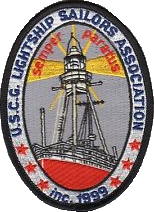 |
|
For more information about the U.S. Coast Guard Lightship Sailors Association and the U.S. Lightship Service, click on logo
|
Lead, Kindly Light
By John Henry Newman
(1801-1890)
"Lead, Kindly Light, amidst th'encircling gloom,
Lead Thou me on!
The night is dark, and I am far from home,
Lead Thou me on!
Keep Thou my feet; I do not ask to see
The distant scene; one step enough for me.
I was not ever thus, nor prayed that Thou
Shouldst lead me on;
I loved to choose and see my path; but now
Lead Thou me on!
I loved the garish day, and, spite of fears,
Pride ruled my will. Remember not past years!
So long Thy power hath blest me, sure it still
Will lead me on.
O'er moor and fen, o'er crag and torrent, till
The night is gone,
And with the morn those angel faces smile,
Which I have loved long since, and lost awhile!
Meantime, along the narrow rugged path,
Thyself hast trod,
Lead, Saviour, lead me home in childlike faith,
Home to my God.
To rest forever after earthly strife
In the calm light of everlasting life."
Note:
"Lead Kindly Light" was a poem originally written by
John Henry Newman (1801-1890), who was 33 years old when he found himself on a boat from the Sicilian city of Palermo to Marseille, France. Newman, who was recovering after being dangerously ill with a fever, was on the boat to return to his native England when he penned the lyrics to "Lead, Kindly Light." The context that Newman was recovering from a frightening illness in the middle of the sea gives insight to the lyrics.
Photo above: Pigeon Point Lighthouse in California, by
Darvin Atkeson
Poem posted on
LV-112 while in service on Nantucket Shoals Lightship Station
"When a sailor gets to thinking
He is one of the best
Let him ship out on a lightship
And take the acid test.
And if he feels like bragging
I don't think that all of his tales
Will be of deep sea sailing
But of the ship that never
Poem provided by Peter Brunk,
USCG-Ret., Commanding Officer,
Nantucket/LV-112, 1970-71, who serves on the USLM Board of Directors
|
This comprehensive New England shipwreck website is a helpful resource for SCUBA divers, maritime history researchers and enthusiasts. The site includes many photographs, charts, reference documents and history about many shipwrecks located in New England waters. For more information,
The Sinking of the U-853
by Capt. William Palmer
When the German enemy submarine
U-853 entered U.S. waters off Portland, Maine in 1945, it torpedoed and sank the
USS Eagle-56.
Nantucket/LV-112, converted to an examination vessel,
USS Nantucket (1942-45) during WWII, helped save the crew of the
USS Eagle-56.
This is a book about the
U-853
story, researched and written by
Capt. Bill Palmer
, a long-time shipwreck researcher, diver and preservationist.
Description of book: "Out in the cold Atlantic Ocean off the coast of Rhode Island, lies the remains of what was once a feared and mighty hunter. It's not a fish or shark, for that matter it is not even a marine creature. It's what men feared the most when they went to sea aboard their vessel back during the World War II years. It's a German submarine called a U-Boat. The
U-853 was the last German submarine sunk in World War II. She was sunk with all hands just minutes before World War II ended. The once mighty hunter feared by all who put to sea, now lies in 130 feet of water off the coast of Block Island, Rhode Island, her grave marked only by a circle on the nautical charts, DANGER Unexploded Depth Charges, May 1945."
Capt. Palmer has been running a charter boat for wreck-diving, shark-fishing and shark-cage-diving off the coast of Rhode Island and Connecticut for 40 years.
German U-boat attack off Portland, Maine, during WWII, involving
LV-112 (USS Nantucket)
This book is the story of a small U.S. sub-chaser, the
Eagle 56, caught in the crosshairs of a German U-boat, the
U-853, whose brazen commander doomed his own crew in a desperate, last-ditch attempt to record final kills before his country's imminent defeat a few weeks later in May. And it is the account of how one man, Paul M. Lawton, embarked on an unrelenting quest for the truth and changed naval history.
For more information, log onto: "
Due to Enemy Action
"

"In February of 1952, one of the worst storms to ever hit the East Coast struck New England, damaging an oil tanker off the coast of Cape Cod and literally ripping it in half. On a small lifeboat faced with frigid temperatures and 70-foot high waves, four members of the U.S. Coast Guard (Bernie Webber and three other crewmen) set out to rescue the more than 30 stranded sailors trapped aboard the rapidly sinking vessel. 'The Finest Hours' is the story of their heroic mission, which is still considered the greatest small boat rescue in Coast Guard history."
(Michelle McCue, 9/9/14)
Bernie Webber (later served on
Nantucket/LV-112, 1958-60) and the three other crewmen were awarded the coveted USCG Gold Lifesaving Medal for their heroism in what is considered by maritime historians to be "the greatest small boat rescue in Coast Guard history." Mr. Webber, who was a member of the USCG Lightship Sailors Association, was extremely helpful in assisting the
USLM-Nantucket/LV-112 compile research information and historic documents about
LV-112. He was a pleasure and honor to work with. Bernie passed away in January 2009. He was considered "A Real American Hero" and is dearly missed.
|
|
|
The full length movie "The Finest Hours' is available on DVD.
|
To learn more about
lighthouse news, click on
Lighthouse Digest
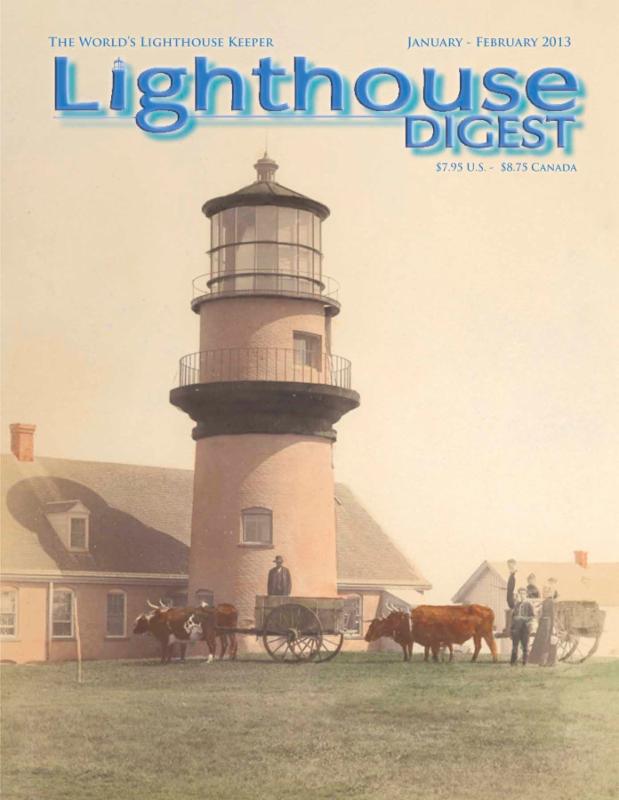
Explore the oceans in depth and Woods Hole Oceanographic Institution with
Oceanus magazine
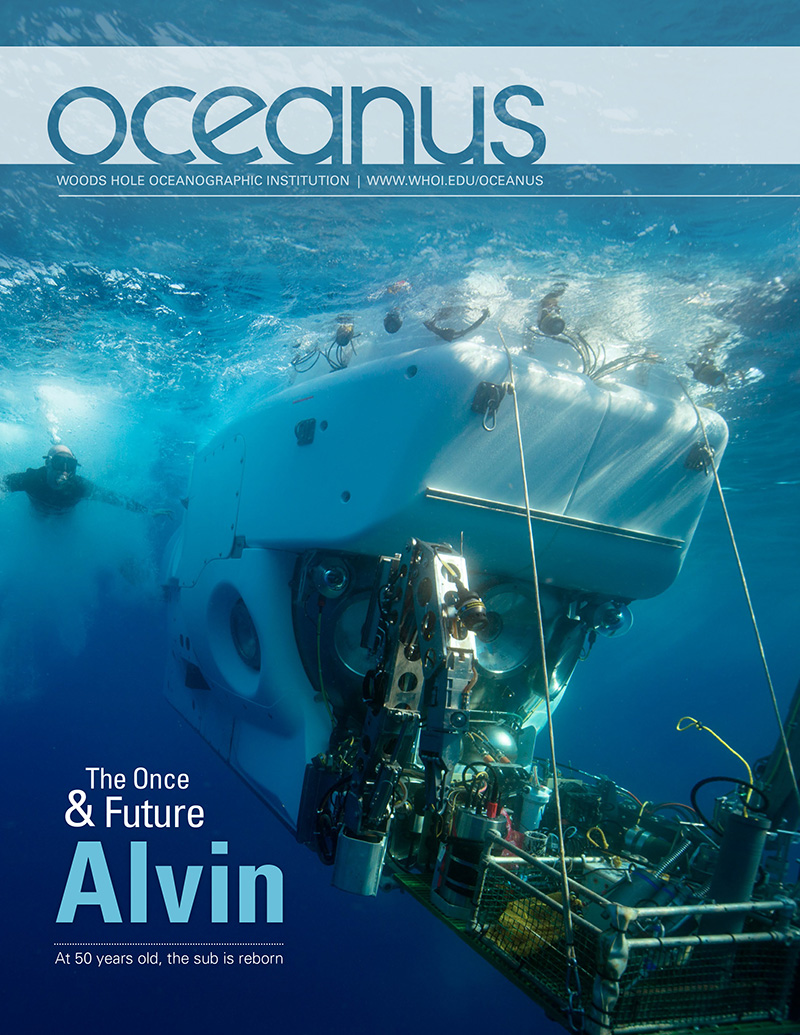
Oceanus
explores the oceans in depth, highlighting the research and researchers at Woods Hole Oceanographic Institution in news, features and interviews written by magazine staff, with full-color photographs and illustrations. Each issue covers a wide spectrum of oceanography, spanning coastal research, marine life, deep-ocean exploration and the ocean's role in climate, as well as ocean technology and policy. To learn more, click on magazine cover above.
Lightships, Lighthouses & Lifeboat Stations:
A Memoir and History
Lightships, Lighthouses & Lifeboat Stations is part history book, part memoir, written by Bernie Webber, recipient of the Coast Guard's highest award, the Gold Life-saving Medal, and hero of the Disney movie The Finest Hours. While the public will recognize Webber's name from the movie and the bestselling book by the same name, few people know that during his lengthy Coast Guard career he served on lightships (ships anchored in dangerous areas to warn other vessels of hazards) in addition to lifeboat stations (small boat rescue stations) and lighthouses. Webber poses the following question: "How did the lightship men cope with the isolation, constant loneliness, boredom, fear, or just sheer terror? All were part of life on board a lightship. Rough seas tossed the ship about, rearing up and down on the anchor chain. This was a world of isolation, noise from operating machinery, and blasts from the powerful foghorn that went on for hours, sometimes days, at a time." Webber answers that question in this book, drawing on a combination of personal experience and meticulous historical research. Discussions of men going mad, lightships being run down by larger ships, anchor chains breaking, and lightships cast upon shoals are offset by humorous stories and the author's reflections on his best days at sea. Fourteen historic photos are included, as well as a foreword by Michael Tougias.(reprinted from Amazon).
Help support the restoration of LV-112 by donating your old car and receive a tax deduction
How it works
We have teamed with Charitable Auto Resources, Inc. (CARS), to accept vehicle donations across the United States. Once
you contact our customer service representative about making a donation, everything will be taken care of, including a receipt for your tax records. Sale proceeds will be donated to the USLM in your name. Donating your vehicle to the U.S. Lightship Museum is as easy as calling our representative toll-free at 855-500-7433.
For more information, click here.
The Lightships
of Cape Cod
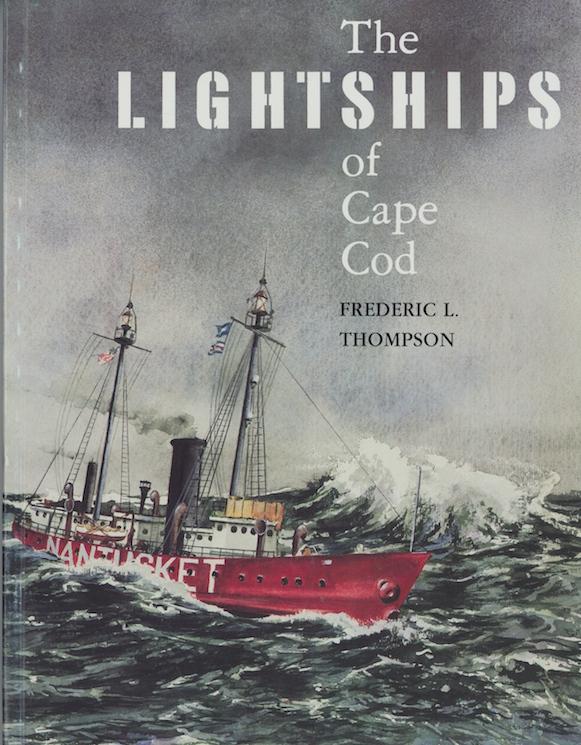
Authored by Frederic L. Thompson, 1996, 2nd printing, 112 pages, soft wrap. Signed by the author. Illustrated with over 93 beautifully detailed photographs. Much sought-after, this scarce volume chronicles the history of the lightships in this vital area. Wonderfully detailed black-and-white photographs enhance the author's vivid description of the history and life aboard these vessels. One of the only volumes ever written exclusively on this subject, this fine work will make a fine addition to any library. Price: $14.95 plus shipping ($5.95), total: $20.90. May be purchased online
from the USLM; just click on "Donate" button in this newsletter and add a notation in the area provided. Or mail a check or money order addressed to: U.S. Lightship Museum, PO Box 454, Amesbury, MA 10913
Massachusetts Lighthouses and Lightships
"Massachusetts Lighthouses and Lightships" by Arthur P. Richmond is an indispensable addition to the lighthouse enthusiast's library, required reading for those interested in New England maritime history, and a delight for anyone who enjoys coastal Massachusetts. More than 800 images, many never before published, include historic plans that describe the details of these aids to navigation, and archival and contemporary photos that trace through their history. The book covers all the lighthouses and lightships that marked the shores (exclusive of Cape Cod and the Islands) and guided mariners through the challenging waters surrounding Massachusetts. This volume also explores the interiors of towers, shows the lantern rooms of rarely-visited lighthouses, and gives fascinating facts about these beacons through their 200-year history. U.S.Lightship Museum (USLM): Excellent book-one of the better books published, about lighthouses and lightships. Credit: Review-Amazon Books/USLM
U.S. Lightship Museums
|
|
|
A crew member rings the bell on the foredeck of Nantucket New South Shoal No. 1 during low-visibility storm conditions. The llustration is from "Life on the South Shoal Lightship" by Gustov Kobbe, Century Magazine, August 1891
|
Kenrick A. Claflin & Son Nautical Antiques
Click on the website link above to see nautical artifacts available at Kenrick A. Claflin & Son Nautical Antiques, which has donated publications to the USLM.
|
|
| |
|
[Note: To see entire eNews, click link above newsletter]
Spring has sprung!
|
|
|
Yes, that is Nantucket Lightship/LV-112 leaving the U.S. Coast Guard base in Boston Harbor under her own power after undergoing maintenance. However, the year is 1962, when the largest U.S. lightship ever built was heading back to Nantucket Shoals Lightship Station, the most isolated and treacherous lightship station in the world, located 100 miles from the U.S. mainland. Once at the station, the ship would drop anchor to a depth of nearly 200 feet and guide tranatlantic ships away from the dangerous shoals.
|
Spring has arrived with the anticipation of the warmer weather and inspiration of venturing out to visit and explore new outdoor adventures and learning opportunities. In fact, historic Nantucket Lightship/LV-112 was scheduled to open the new season in April to the public for tours and special events. However, due to the current COVID-19 situation that has temporarily mandated the closure of nonessential institutions and businesses, Nantucket/LV-112 will be closed to the general public until further notice. We will continue to observe government recommendations and advisories as well as a safe and common-sense appraisal of the situation. In addition, LV-112 is presently undergoing its next phase of restoration, which also will interrupt scheduled onboard tours and special events for most of the season
.
|
|
|
Nantucket/LV-112 at her homeport berth on the East Boston waterfront during the 2019 season.
|
The U.S. Lightship Museum's priority this season is managing the next phase of
LV-112's
restoration and preservation, which is being funded by two grants, one from
the City of Boston's Community Preservation Act and the other from the National Park Service's "Save America's Treasures" program. Regular museum educational activities, tours and special events are on hold this season until this phase of restoration is completed. We anticipate this phase of restoration will be virtually completed by this fall.
|
|
|
Last fall, LV-112 volunteers painstakingly unloaded and separated material removed from LV-112. Storage holds and compartments on board LV-112 were cleaned out and corroded steel sections were replaced and prepared for new paint coatings. Amazingly, there are still many new old stock (NOS) mechanical and electrical parts in their sealed and unopened packages on board LV-112 from when it was a commissioned USCG lightship.
|
|
|
|
In LV-112's engine-parts stores in the lower hold (stern section) below waterline, miscellaneous spare new engine parts have been stored from when LV-112 was a commissioned USCG lightship. On the deck (lower left photo) are two spare Cooper-Bessemer, 8-cylinder, 900HP cylinder heads (in photo below, the numbered operational cylinder heads are shown). During the restoration, LV-112's stern section lower hold and ballast tanks will be cleaned, inspected, prepped and painted with protective coatings. Necessary structural repairs are also being made. Nearly two tons of obsolete electric motors/parts, and pieces of scrap steel were removed from the holds.
|
|
|
|
Volunteer John Rogers stands in the main engine room next to the Cooper-Bessemer 8-cylinder, 900HP Diesel engine. Each cylinder head is numbered, as shown on top of main engine.
|
|
|
|
Feeling sea-sick? Yes, there were USCG crew members that did became sea-sick, especially when they were confined inside the lightships during foul weather or when the fog horn was activated. Volunteer and college student Tim McCarthy models a makeshift "barf can" and holds another that were found stored away on LV-112. Based on the period graphics on the cans, they look to be from the 1950s. Some lightship crew members would create these cans from discarded containers and wear them when feeling ill during rough weather, causing the lightship to rock and roll.
|
However, we submit that a silver lining to this COVID-19 situation is that, while confined to our homes, it may be an opportune time to conduct some Internet research on one of your favorite topics, catch up on reading, or even consider learning some new nautical crafts such as marlinspike seamanship or how to hand-craft Nantucket Lightship baskets (see two articles below). This newsletter's sidebar includes listings of some excellent publications and online resources that offer unique maritime history about lighthouses, lightships, U.S. Coast Guard rescues, etc. During this extraordinary time our thoughts are with all of you. Please feel free to contact the U.S. Lightship Museum if you have any further questions by clicking here. As the old saying goes, "Fair winds and following seas!"
|
|
|
Visitors who toured LV-112 last season enjoyed the massive fog bell.
|
|
Nantucket Lightship/LV-112's next phase of restoration is underway
|
|
|
Matt Moretti, a fabricator and welder from the Lightship Group, LLC, welds a new section of deck plating that replaces a corroded section in LV-112's engine-parts stores (stern lower hold), which will help maintain the compartment's watertight integrity.
|
|
|
|
A crew from AMEX Industrial Services performs maintenance work, removing rusted areas with pneumatic needle scalers and preparing for paint coatings on LV-112's steel exterior deck houses.
|
Nantucket/LV-112's next phase of restoration is well underway, jointly funded by grants from the City of Boston's Community Preservation Act and a National Park Service "Save America's Treasures" grant. LV-112's dry-docking had been delayed, due to the backlog of commercial vessels waiting to be dry-docked at the Fitzgerald Shipyard in Boston Harbor, so the USLM has scheduled as much as possible of the restoration and maintenance work at LV-112's homeport berth while the ship is in the water. However, the majority of the restoration work required is located at and below the waterline, which can only be accomplished while LV-112 is in dry-dock. At this point, LV-112's dry-docking is anticipated to take place sometime during July.
|
|
|
LV-112's port and starboard pilot house doors, both badly corroded, were removed and taken to the Lightship Group's offsite facility and dismantled to be fully restored. The corroded sections will be cut out and new steel sections will be cropped, welded and cosmetically finished. The door latch mechanisms also will be restored.
|
The USLM is committed to
 |
|
 |
Jim Hewitt, volunteer and LV-112 electrician, prepares to reinstall one of two LV-112 signal lamps that mount on the flying bridge. Jim reconditioned the signal lamp back to operational condition. The signal lamps are used for communicating in Morse code to other ships at sea.
|
faithfully
maintain the historic integrity of all the restoration work performed on the historic lightship to represent he period from 1936-75. Historic preservation requirements of LV-112
are also mandated in a USCG covenant bound to Nantucket/LV-112. Through the years while LV-112 (also known as WAL-534 / WLV-534) was a commissioned U.S. lightship, modifications and USCG updates were integrated into the floating lighthouse. The restoration work currently in progress conforms to the 1960-75 time period.
LV-112 had undergone a major refit and updating in 1960. Diesel power replaced the original reciprocating compound steam engine and the light beacons were upgraded, in addition to other power, electrical and electronic systems. The most obvious visual modification is the replacement of the tall smoke stack with a lower and wider stack to accommodate the installation of additional auxiliary engines and their exhaust.
|
|
|
LV-112 with original smoke stack, c. 1957. Photo credits: (left)Tony Gimbale; (right) USGC, 1956
|
|
|
What do the USNS Comfort and Nantucket/LV-112 have in common?
|
|
|
USNS Comfort (T-AH-20) was in dry-dock in 2017 at Boston Ship Repair in South Boston, which had the overhaul contract. The Lightship Group, LLC, is a subcontractor for Boston Ship Repair, and it also is involved with Nantucket/LV-112's current phase of restoration. The Lightship Group, (name is coincidental) is a contractor for the U.S. Navy, U.S. Coast Guard, NOAA and Merchant Marine. Both the Comfort and LV-112 were created to help save lives. The Mercy-class Military Sealift Command hospital ship USNS Comfort was recently deployed to the Port of New York to assist in the COVID-19 pandemic humanitarian relief efforts, providing additional hospital capacity. The USNS Comfort's primary mission is to provide an afloat, mobile and acute surgical medical facility to the U.S. military that is flexible, capable and uniquely adaptable to support expeditionary warfare. The Comfort's secondary mission is to provide full hospital services to support U.S. disaster relief and humanitarian operations worldwide. With its 1,000-bed capacity, USNS Comfort and its sister ship, the USNS Mercy (presently deployed on the West Coast), are the largest hospital ships in the world. The twin ships actually are former oil tankers converted into floating hospitals, each the height of a 10-story building and the length of three football fields. Photo: Peter Starr, Lightship Group
|
|
|
USNS Comfort arriving in the Port of New York, March 30, 2020, to help provide additional hospital support for the COVID-19 pandemic outbreak. The Comfort entered New York Harbor via the main shipping lanes where Nantucket Lightship/LV-112 previously guided transatlantic ships into the Port of New York from 1936 to 1975. For more information about the USNS Comfort, click here. Photo: Mike Segar, Reuters
|
|
In the mood to learn some time-
honored lightship crafts?
|
|
| These hand-crafted lightship baskets were created by Patti Baker, an award-winning basket weaver who has made hundreds of baskets in an array of shapes and sizes. Patti has crafted baskets for many years and teaches basket-making. She is currently the Executive Director of the Marblehead, MA Arts Association. |
During these days of restricted travel and having to practice social distancing due to the present COVID-19 pandemic, most of us are virtually house-bound and looking for something to do. So perhaps this would be an opportune time to learn a new craft to help pass the time, such as marlinspike seamanship (the art of rope splicing) or basket-weaving. Nantucket Lightship baskets have become popular among a segment of professional artisans and amateurs. Nantucket basket-weaving kits can be found by searching online and YouTube features instructional videos.
|
|
|
19th-century Nantucket Lightship baskets. Photo: Rafael Osona, Nantucket Auctions
|
|
|
|
Nantucket New South Shoals No.1 Lightship served on Nantucket Shoals Lightship Station, 1855-92. Photo c. 1891
|
Unique to Nantucket in both style and craftsmanship, Nantucket baskets were originally crafted by crewman (some were retired whalers) on the Nantucket New South Shoals No.1 Lightship, which served on the isolated and treacherous Nantucket Shoals Lightship Station from 1855-92. The Nantucket Lightship sailors lived on the lightship for many weeks (sometimes months) at a time between shore leave and took up the craft of basket-weaving to help pass the time. Utilitarian in purpose, early baskets were typically open, with fixed or swing handles. When the government banned the making of baskets aboard the lightship as "moonlighting," weavers simply moved their basket-making from ship to shore, where they began weaving for commercial trade, with prices ranging from 25 cents to $1.50 each.
|
|
|
A maker's label shows this lightship basket was hand-crafted by Andrew Jackson Sandsbury (1830-1902) on board Nantucket Lightship while serving on the Nantucket from 1872 to 1892. Sandsbury was a career seaman and former whaler. Photo: Rafael Osona, Nantucket Auctions
|
These talented artisans/sailors passed their craft down to the present day. These historic baskets often fetch high prices at auctions, some beyond $100,000. New traditional-style, hand-crafted lightship baskets are mostly created as purses, and quality baskets sell today from $500-$1,000. For more information about Nantucket Lightship baskets,
click here.
Also, to inquire for additional information about other available resources for learning about lightship basket-making
click here.
|
Discover marlinspike seamanship
|
|
|
Various decorative and utilitarian hand-crafted items using marlinspike seamanship techniques. Photo: Rocky Coast News
|
|
|
The USLM previously held a Marlinspike Seamanship class on LV-112, taught by Jim Keating (left) of Marblehead, MA, who is very talented and an expert at marlinspike seamanship. Jim is teaching a student how to craft a Turk's head rope bracelet. This particular knot is used primarily for decoration and occasionally as anti-chafing protection. A notable practical use for the Turk's head is to mark the "king spoke" of a ship's wheel; when this spoke is upright the rudder is in a central position. For more information about Jim Keating and his marlinspike services, click here.
|
 Marlinspike seamanship has a long history that goes back as long as ships have been
going to sea. The marlinspike is a polished, tapered, cone-shaped metal tool (6-12 inches long) used in nautical ropework. Having mastered the skill of marlinspike seamanship (including splicing, knot tying, and sewing using the marlinspike), sailors traditionally called themselves "marlinespikes" or "marlinspike seamen." In addition to creating utilitarian pieces for use onboard ships, marlinspike seamen would create gifts for loved ones left behind on long voyages. Being able to master proper knot-tying as well as learning some basic rope-splicing techniques certainly comes in handy for today's recreational boaters.
Marlinspike seamanship has a long history that goes back as long as ships have been
going to sea. The marlinspike is a polished, tapered, cone-shaped metal tool (6-12 inches long) used in nautical ropework. Having mastered the skill of marlinspike seamanship (including splicing, knot tying, and sewing using the marlinspike), sailors traditionally called themselves "marlinespikes" or "marlinspike seamen." In addition to creating utilitarian pieces for use onboard ships, marlinspike seamen would create gifts for loved ones left behind on long voyages. Being able to master proper knot-tying as well as learning some basic rope-splicing techniques certainly comes in handy for today's recreational boaters.
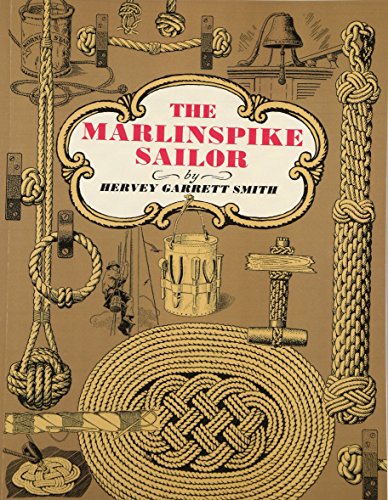 Actually, to get started, all you have to do purchase a good guidebook such as "The Marlinspike Sailor" by Hervey Garrett, which can be purchased in used condition for as little as $8.00 on the Internet, or watch an instructional video on YouTube. Don't forget a piece of rope!
Actually, to get started, all you have to do purchase a good guidebook such as "The Marlinspike Sailor" by Hervey Garrett, which can be purchased in used condition for as little as $8.00 on the Internet, or watch an instructional video on YouTube. Don't forget a piece of rope!
|
IN MEMORIAM:
Richard E. Arnold (USCG Ret),
1929-2019
Survivor of the 1954 epic 'twin sisters' hurricanes, Carol and Edna, while serving on
Nantucket/LV-112
|
|
|
When former LV-112 USCG crew member Dick Arnold (USCG Ret) came aboard LV-112 two years ago, it was his last visit to his former ship. Dick is holding one of two Remington Mark III Flare Signal Pistols that where issued to Nantucket/LV-112 in 1936. Dick rescued the signal flare pistols from being tossed overboard from LV-112in 1954. The signal flare pistols were deemed obsolete by the USCG and replaced by newer versions. Dick saved them, and today they are valuable historic artifacts. Dick later gave the pistols to Dennis Cosmos, who previously served on Boston Lightship/WLV-189 and Relief Lightship/WLV-613. Dennis, in turn, donated them to the U.S. Lightship Museum and Nantucket/LV-112.
|
Richard (Dick) E. Arnold, of Gloucester, MA, passed away peacefully on Oct. 4, 2019. Dick served in the Coast Guard for 20 years including his first assignment on Nantucket Lightship/LV-112 and eight years as a light keeper at Eastern Point Lighthouse in Gloucester.
Dick grew up as a commercial fisherman along with his father and brothers.
As a young boy, he served on his family's fishing trawler, the Phyllis A, with his dad, who built the wooden fishing trawler in 1925. Upon his retirement from the USCG, after serving from 1952-72, Dick skippered the Phyllis A from 1972 until both he and the boat retired from commercial fishing in 2000. He was the last captain of the Phyllis A, now undergoing an extensive restoration at Gloucester Marine Railways. A nonprofit organization, the
Phyllis A Marine Association
, was established to manage and raise funds to restore and preserve the historic fishing trawler/gillnetter. Old vessels such as this are a dying breed and an important piece of maritime history that instead of disappearing, are worthy of being saved.
|
|
|
Dick Arnold (left) in LV-112's pilot house holds the ship's solid bronze wheel after it was ripped off the helm station by a powerful wave that crashed through several sealed portholes. Dick was standing watch at the helm during Hurricane Edna's 110-mph winds and 70-foot mountainous seas. Upon impact of a destructive wave, he was hit and thrown back against the ship's bulkhead. Luckily, he escaped serious injury, but several of his crewmates did not. Fortunately, there were no fatalities. Although badly damaged, LV-112 rode out the fierce hurricane, was towed back to Boston for repairs and then returned under her own power to her remote station, 100 miles off the U.S. East Coast, continuing her duty as a guiding beacon to transatlantic shipping.
|
One of the most horrific events during Dick Arnold's USCG duty was almost losing his life during Hurricane Edna, the worst of two back-to-back hurricanes, Carol and Edna, that impacted Nantucket/LV-112 in 1954. During Edna, he and other crew members fought monstrous 70-foot seas and fierce 110-mph winds. "I thought my life was certainly going to end with the rest of my crewmates during that God-awful hurricane," he said. "I had never been so scared in my life." Nantucket/LV-112, the largest U.S. lightship ever built, was severely damaged, disabled and came dangerously close to capsizing.
To read a National Trust for Historic Preservation's interview with Richard Arnold, click here. Many of us at the USLM knew Dick well and will miss him very much.
|
Ralph W. Hupfer (USCG Ret),
1947-2020
In 2015, Ralph Hupfer revisited his former ship, Nantucket/LV-112 in East Boston (photo: Ron Janard). The second photo is Ralph in 1964, when he joined the U.S. Coast Guard.
Ralph, who served the USCG from 1964-68, was assigned to Nantucket Lightship/LV-112 from 1965-67. He was from Massachusetts and lived on Cape Cod. Back in May 2010, Ralph recorded video footage of Nantucket/LV-112 being towed by a Foss Maritime Co. tugboat to Boston Harbor from Oyster Bay, Long Island, NY, through the Cape Cod Canal early in the morning. To see Ralph's video posted on YouTube,
click here.
Ralph also was a member of the USCG Lightship Sailors Association International. He
will be greatly missed by all.
|
|
Support LV-112's restoration!
Become a USLM member today
|
|
|
For a gift of $1,000 or more, donors will receive a limited-edition, fine-art print of the SS United States passing Nantucket/LV-112, signed by marine artist Gerald Levey.
|
Discover the value-added membership benefits when you become a member of the U.S. Lightship Museum (USLM). The USLM is a member of the Council of American Maritime Museums (CAMM). All USLM members will be granted reciprocal privileges (free admission) at participating CAMM institutions. For more information about the benefits and the USLM Membership program, click on USLM Membership.
All electronic donations will be processed by PayPal.
We thank everyone for their ongoing
contributions
and support
|
|
| |
| |
|
|